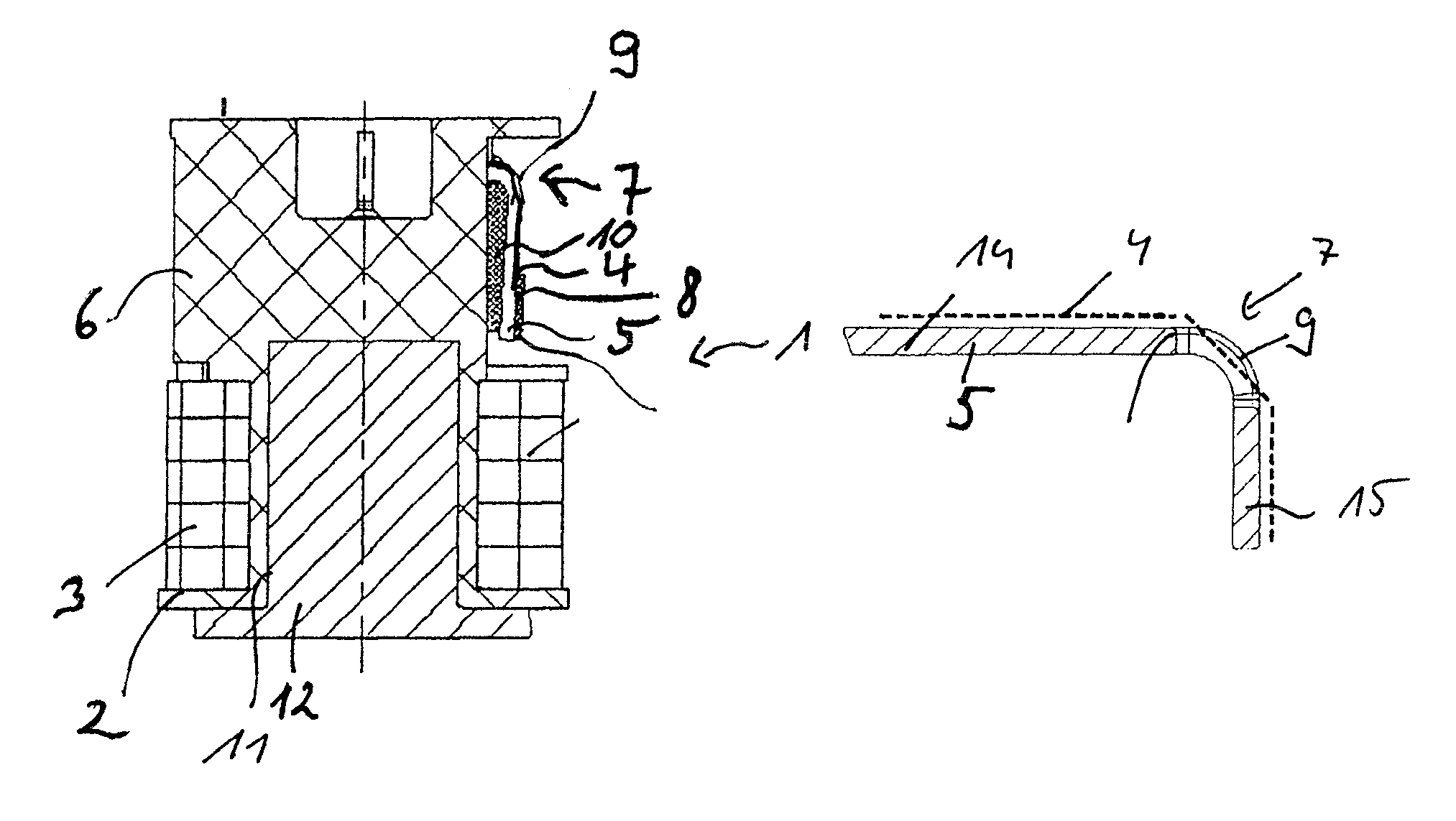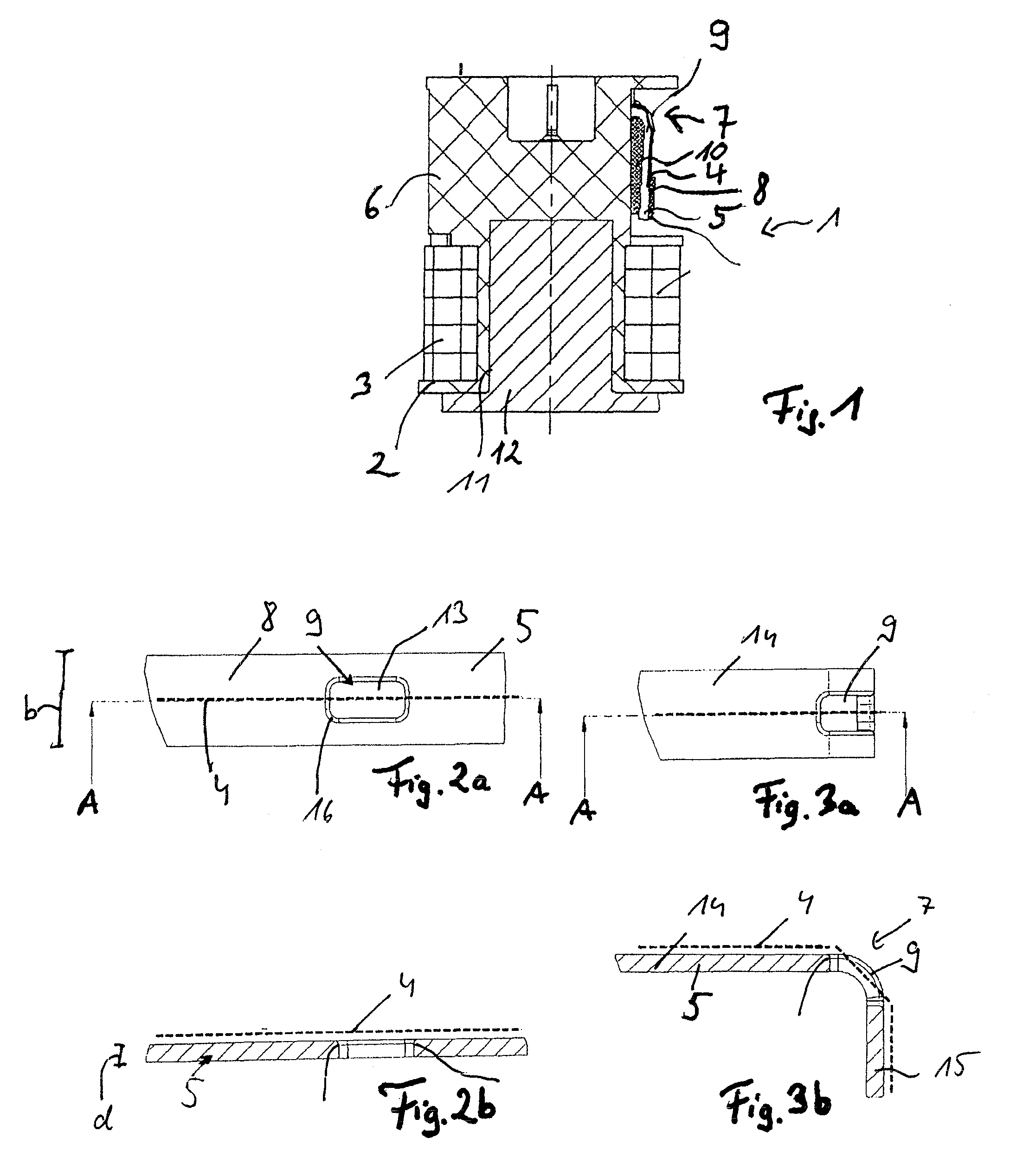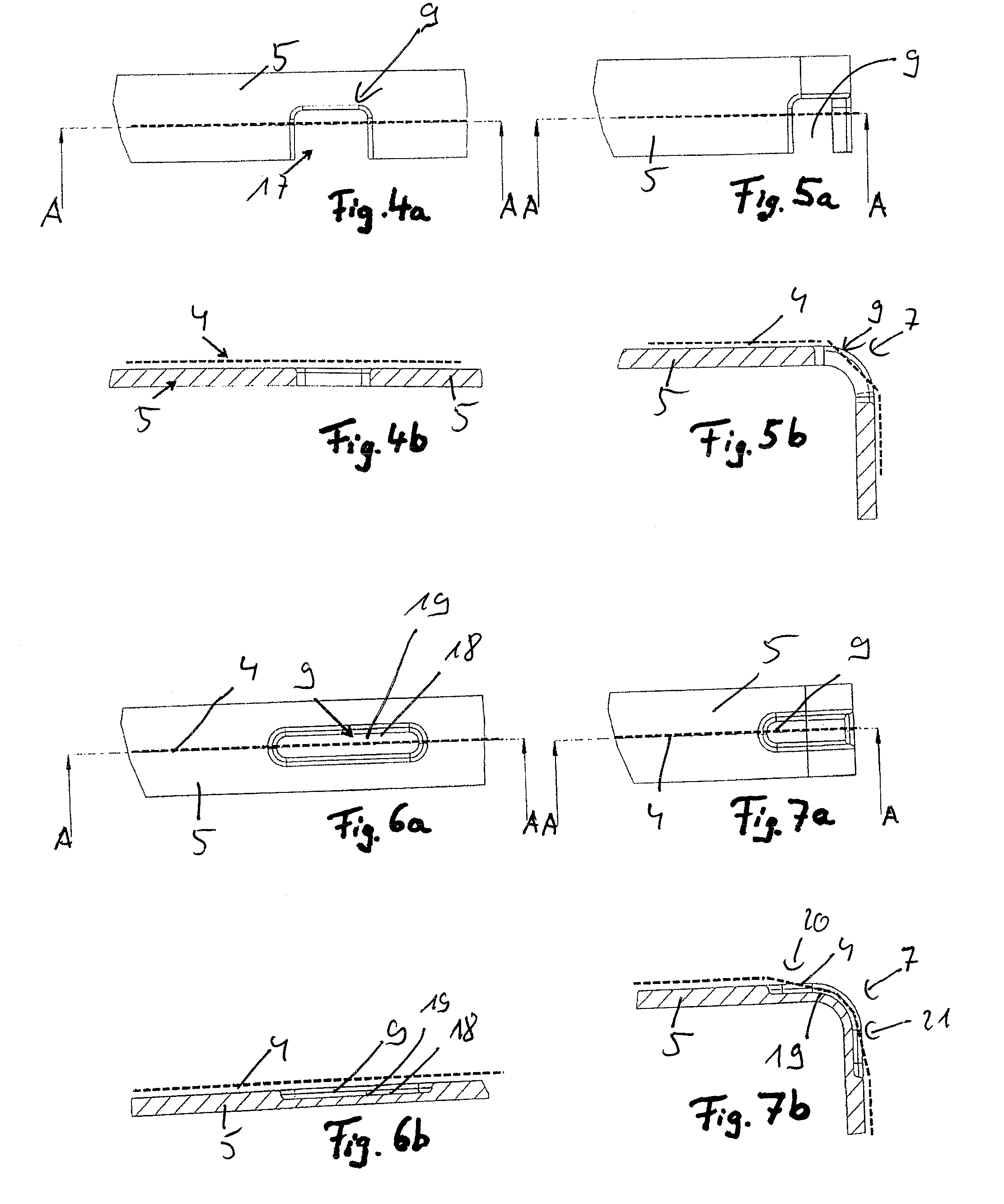Actuation device
a technology of actuation device and winding wire, which is applied in the direction of coils, electrical devices, electromagnets, etc., can solve the problems of material weakening and winding wire tearout, and achieve the effect of improving the longevity of the actuation device and reliably preventing the damage of the winding wir
- Summary
- Abstract
- Description
- Claims
- Application Information
AI Technical Summary
Benefits of technology
Problems solved by technology
Method used
Image
Examples
Embodiment Construction
[0043]In the figures, the same elements and elements with the same function are characterised with the same reference numbers.
[0044]An electromagnetic actuation device 1 is shown in FIG. 1, which interacts in an actuating manner with an actuation partner, for example a camshaft hub shifting, which is not shown. The electromagnetic actuation device comprises a stator 2 with a coil winding 3, wherein an actuation element (armature) which is not illustrated is guided in an axially adjustable manner centrally in the interior of the actuator. To adjust the actuation element, current flows in the coil winding 3, more precisely the winding wire 4 thereof. To contact the winding wire 4, the same is electrically conductively connected at both ends to one tab-shaped contact element 5 in each case, which contact element is guided radially out of a support 6 constructed from plastic and bent by approximately 90° outside of the support 6 in a bending region 7. The winding wire runs on the contac...
PUM
| Property | Measurement | Unit |
|---|---|---|
| width | aaaaa | aaaaa |
| width | aaaaa | aaaaa |
| width | aaaaa | aaaaa |
Abstract
Description
Claims
Application Information
 Login to View More
Login to View More - R&D
- Intellectual Property
- Life Sciences
- Materials
- Tech Scout
- Unparalleled Data Quality
- Higher Quality Content
- 60% Fewer Hallucinations
Browse by: Latest US Patents, China's latest patents, Technical Efficacy Thesaurus, Application Domain, Technology Topic, Popular Technical Reports.
© 2025 PatSnap. All rights reserved.Legal|Privacy policy|Modern Slavery Act Transparency Statement|Sitemap|About US| Contact US: help@patsnap.com



